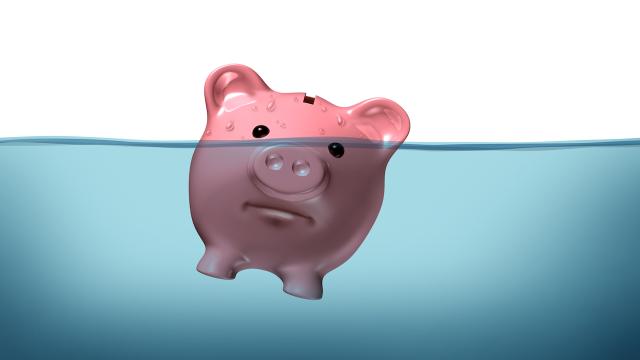With the new year well under way, and with many still reeling from Christmas debt, it’s no surprise that many resolutions revolve around paying off debt. If you are among those who want to pay down debt in 2014, you should make a plan. A good plan can help you pay off debt faster and save you money overall — especially in interest.
This post originally appeared on Quizzle Wire.
Here are the steps to creating a more effective debt pay down plan:
Look at Your Monthly Cash Flow
“First, take stock of your personal monthly cash flow,” says Anthony Manganiello, a financial literacy expert and author of The Debt-Free Millionaire: Winning Strategies to Creating Great Credit and Retiring Rich.
Manganiello recommends that you gather all of your monthly bills and deduct them from your total monthly income. “I mean all of your bills,” he says. “Utilities, food, gas, debt payments, credit card statements, everything. Include those you pay quarterly or bi-annually, like insurance.”
If you aren’t sure what to expect, he says to look over your online bank statement for the last quarter of the previous year. This can help you find payments and expenses you might have forgotten. “After you’ve deducted everything from your expected income, you’ll have a number that will help you recover,” Manganiello says. “Be sure this number is reasonable and reliable as possible.”
The idea is to take the amount of money you have available and apply it to your debt so that you can use “regular” cash you already have to reduce your debt.
Order Your Debts
Manganiello, like many personal finance experts, suggests that you order your debts from smallest to largest, regardless of interest rate. This is because, psychologically, you gain a quick victory that can keep you going. It’s more about progress and motivation than it is about speed and saving on interest.
However, if you want to pay less in interest over time, you’ll order your debts so that the loan with the highest interest rate is tackled first. Apply the money you’ve identified in your budget to the first debt on your list. Apply it on top of the minimum balance. Keep paying the minimum balance on all of your other debts.
Once you have the first debt paid off , Manganiello says that you should take the entire amount (extra payment plus minimum) and put it toward the next debt on your list, on top of its minimum payment. As you proceed, you’ll accelerate your debt payoff. And, if you started with the highest-rate debt, you’ll pay off the lower-interest debts even faster as you move through the list. It’s a great way to stay motivated and pay less over time.
Find Ways to Put More Money Toward Debt Reduction
Paying more that minimum is the key to paying down your debt. The most effective debt repayment plans involve paying much more than minimum. The first two steps are a good start.
If you really want to put your efforts into overdrive, though, you need to find even more money to add. Denise Winston is a financial expert with 25 years of experience in the banking industry. She offers three tips for crushing your debt at a faster pace:
- Earmark financial windfalls now: Plan that any financial windfall you receive in the future will go toward debt reduction. Cash gifts, bonuses, raises, overtime pay, and your tax refund should all be added to the payment for the loan you are currently working on, “instead of using it on an urge to splurge,” says Winston.
- Turn clutter into cash: Go through your home and clear out the clutter . Items in good shape can be sold at a garage sale or online. “Round up loose change, take in recycling for a return, and sell your old electronics,” Winston suggests. All of these small things can add up to a little extra to pay down your debt a little faster.
- Find extra money: Don’t be afraid to look for other ways to find money in your budget. “Cash in rewards from your credit cards,” says Winston. “Find hidden cash in your receipts, such as low price guarantees, survey rewards, and coupons.” You can apply all of these savings toward the debt you are currently working on.
Another option is to start a side gig. Look for ways to earn extra money from home through freelancing, consulting, selling, or even starting a website. Any money you make from an extra side gig can be added to your debt repayment.
Don’t Wait
Some consumers try to add up all of the little ways they save to make one big payment when the credit card statement is due. While this can work, the reality is that you are likely to spend that money on something else long before you pay your bill. Instead, make the payment immediately.
As long as your creditor allows you to make extra principal payments anytime, without penalty, there’s no reason to wait. It’s especially easy if you can pay online. Every couple of days, after you’ve added up your savings, go online and pay the amount you’ve added up. Each time you do this, you reduce what you owe — and the daily interest you pay (depending on how your interest is compounded).
You have the chance to improve your situation and save money over time. Don’t let it pass you by. Create an effective debt reduction plan for 2014.
How to Create a More Effective Debt Pay Down Plan in 2014 [Quizzle Wire]
Miranda is a freelance writer and professional blogger specializing in financial topics. Her work has appeared in numerous media, online and offline. Her blog is Planting Money Seeds.

Comments